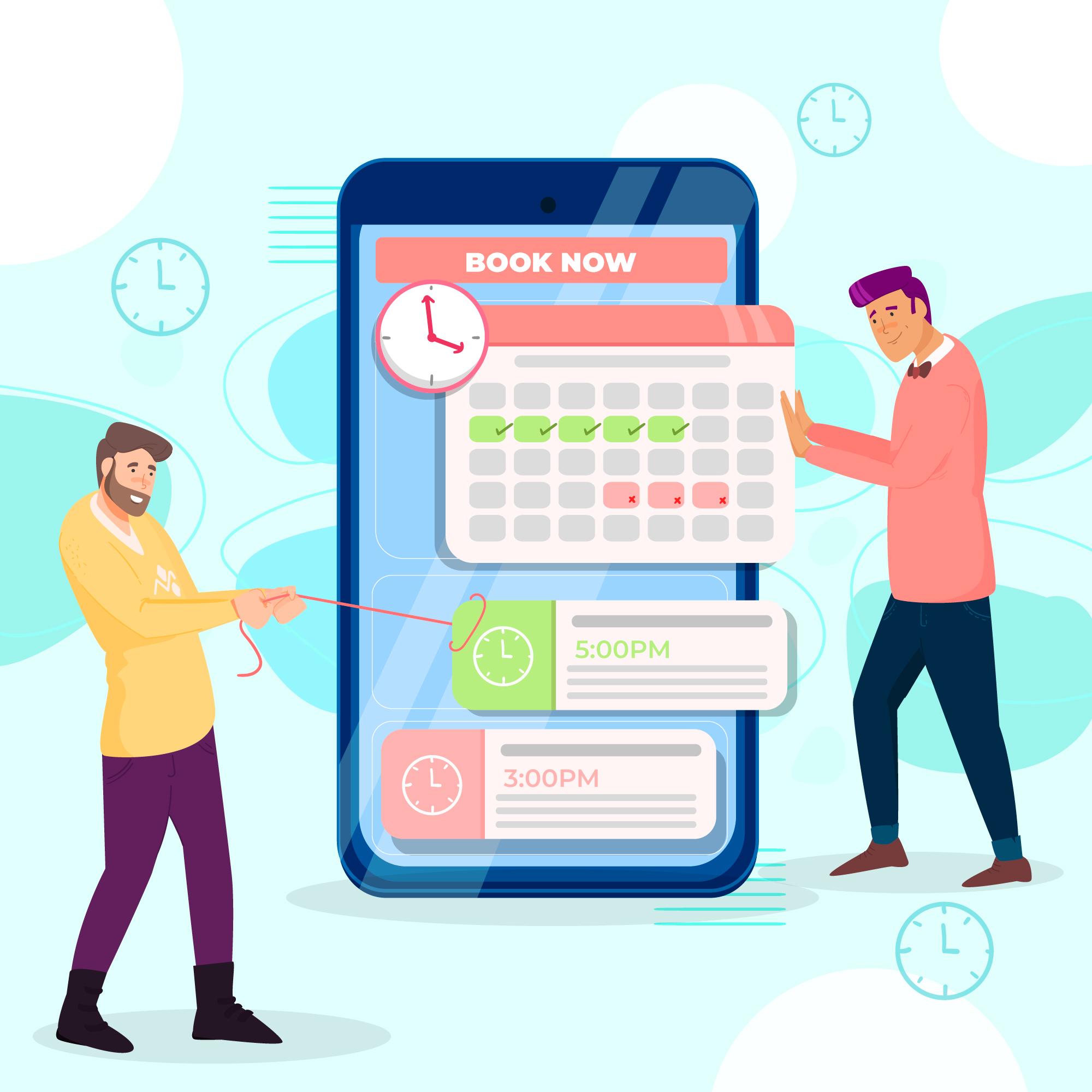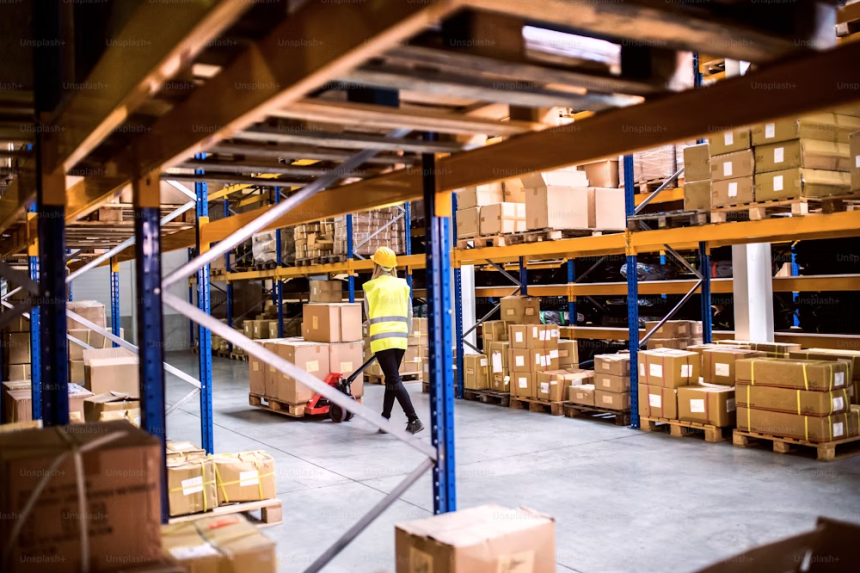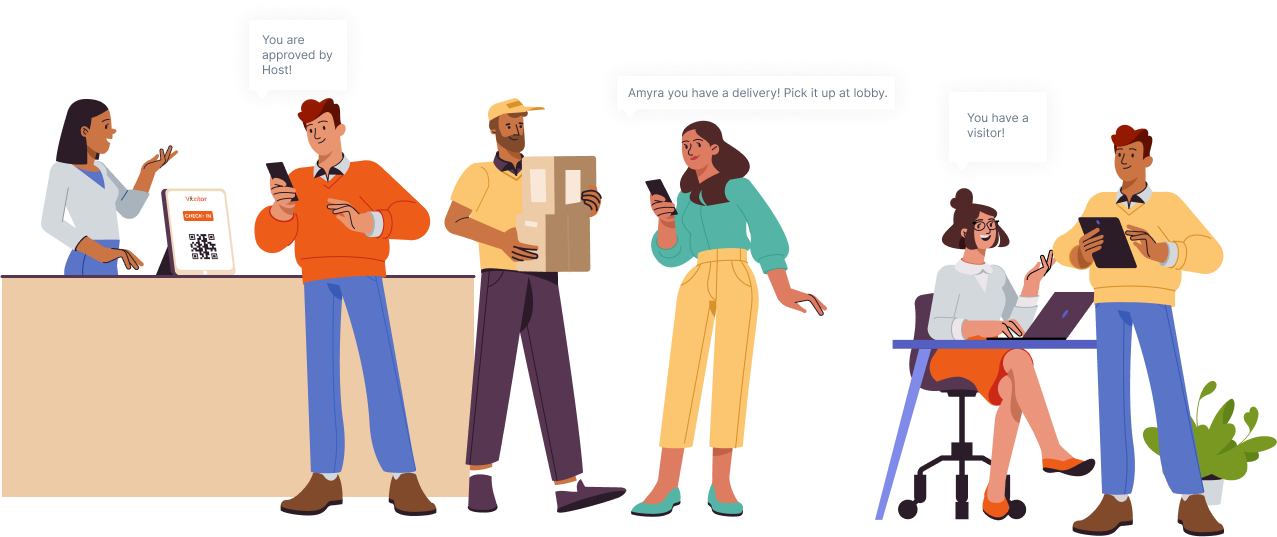Table of Content
Try Vizitor for Free!

Tue, Apr 30, 2024
Read in 9 minutes
Walk into your favorite store. Excitement fills the air as you look around for something great to buy. But wait! There are long lines ahead, time is ticking, and patience is running thin. Sound familiar? That’s where customer flow management comes in!
Now, let’s talk tech. Imagine easy-to-use screens guiding you through check-in, updates coming to your phone, and bam! It’s your turn. It’s not just smoother; it’s super efficient.
But here’s the kicker: customer flow management isn’t just about avoiding lines; it’s about understanding your customers. Yup, peeking into that data means more sales and happier customers. It’s like knowing exactly what they want.
Customer flow isn’t just about handling customers; it’s about managing everyone on your premises. You can also organize visitors at your place. And don’t forget about visitor management systems (VMS). They keep everything safe and in order, ensuring only the right people enter, all with a simple line.

So, whether you’re a big store or a small café, using customer flow management isn’t just smart; it’s the key to impressing customers and beating the competition. Ready to give it a try?
What is Customer Flow?
Customer flow management, also known as foot traffic or visitor flow, is the process of overseeing the movement of customers or visitors within a physical space like a retail store, restaurant, bank, or service center. This concept covers the entire customer journey from the moment they enter to the moment they leave, and includes activities such as browsing products, waiting in lines, interacting with staff, making purchases, and receiving services.

For retail businesses, effective customer flow management means reducing long wait times at checkout, efficiently guiding customers through the store, and highlighting new products to enhance shopping experiences. In industries like healthcare, dining, and banking, which often experience a steady stream of walk-ins throughout the day, managing customer flow is crucial to minimize wait times and ensure a smooth progression of service.
Understanding the Importance of Customer Flow Management
Smooth customer flow management isn’t just about avoiding long lines; it’s about creating an experience that leaves customers smiling and your operations humming. Let’s delve into how optimized flow impacts both customer satisfaction and operational efficiency.
Impact on Customer Satisfaction:
• Smooth flow reduces frustration and wait times, leading to happier customers.
• Positive customer experiences result in higher customer satisfaction metrics.
• Happy customers are more likely to return and recommend your business to others.
Boosting Operational Efficiency:
• Optimized flow translates to faster service, increased capacity, and better resource allocation.
• Efficient flow allows for serving more customers in less time, maximizing productivity.
• Key performance indicators (KPIs) such as throughput rates and service times reflect operational success with optimized flow.
Technological Solutions for Streamlining Customer Flow
In today’s fast-paced world, customer experience is king. Long wait times and inefficient processes can quickly lead to frustration and lost business. Fortunately, technology offers a range of solutions to streamline customer flow, improve efficiency, and enhance the overall customer experience. This section will delve into four key technological tools that can revolutionize how you manage customer flow:
1. Queue Management Systems:
Gone are the days of physical lines snaking through your establishment. Queue management systems offer a more sophisticated approach to handling waiting customers. Here’s what they have to offer:
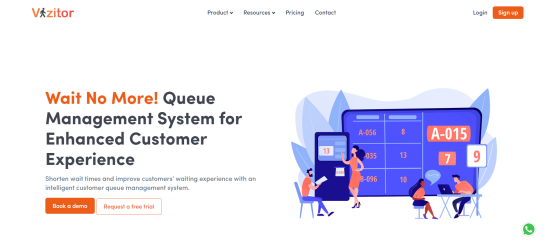
• Virtual Queuing: Customers can join the queue using a mobile app or website, allowing them to wait remotely without physically being present. This eliminates overcrowding and frees them to browse or run errands while they wait.
• Ticket Dispensing Machines: These self-service kiosks provide customers with a physical ticket indicating their place in line. This reduces confusion and provides a sense of order for those waiting.
• Prioritizing Queues: You can configure the system to prioritize certain customer types (e.g., senior citizens, returning customers) or handle
For a comprehensive Queue Management System, consider solutions They offer features like virtual queuing, mobile ticketing, and real-time queue monitoring to ensure a smooth customer flow.
2. Appointment Scheduling Systems:
Appointment scheduling systems allow customers to book specific time slots for service, eliminating the need to walk-in and potentially face long waits. This offers several benefits:
• Reduced Congestion: By spreading out customer arrivals, appointment scheduling prevents overwhelming your staff and creating bottlenecks.
• Improved Wait Time Predictability: Customers know exactly when their turn will be, leading to a more positive experience.
• Increased Operational Efficiency: Staff can prepare for appointments beforehand, streamlining the service process.
3. Visitor Management Systems:
For businesses receiving visitors like clients, vendors, or contractors, visitor management systems offer a secure and efficient solution. Here’s how they benefit your flow:
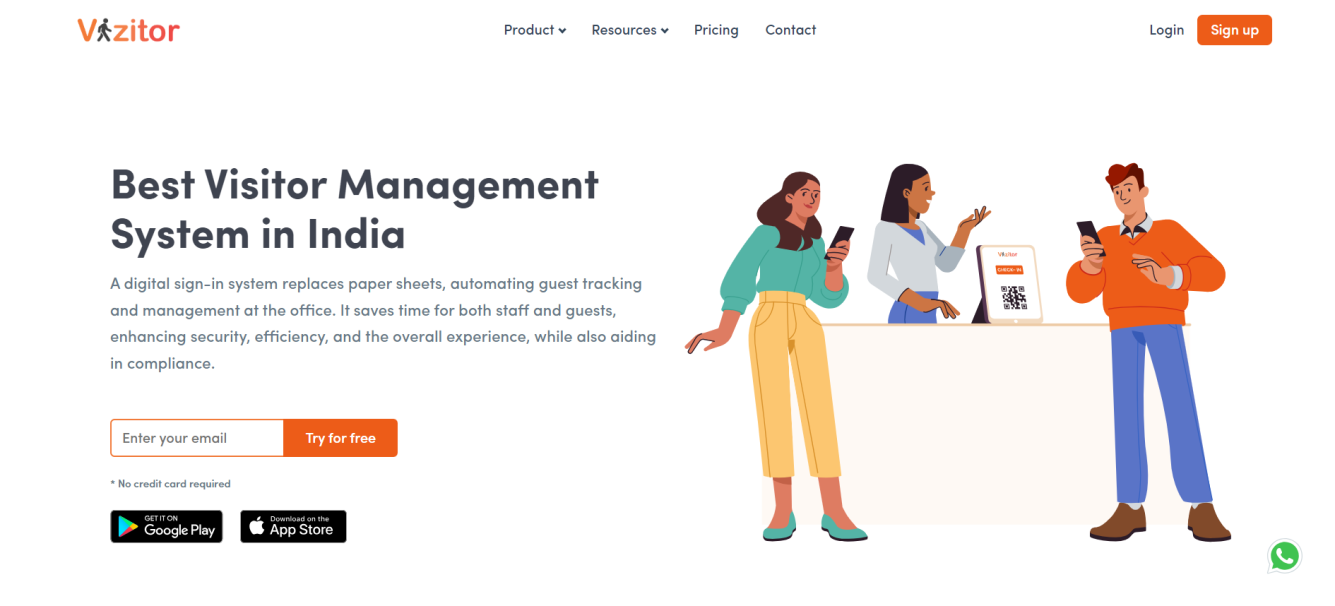
• Tracking Visitors: Systems log visitor information, arrival and departure times, and the purpose of their visit, providing valuable data and enhancing security.
• Managing Access: Visitor badges can be issued with specific access permissions, ensuring only authorized individuals enter restricted areas.
• Enhanced Security: Visitor pre-registration and background checks can be integrated into the system, further bolstering security measures.
Explore Vizitor’s Visitor Management System for features like digital sign-in, pre-registration options, and security clearance management.
4. Meeting Room Management Systems:
For businesses with meeting rooms, managing them efficiently is crucial. Meeting room management systems streamline this process by offering features like
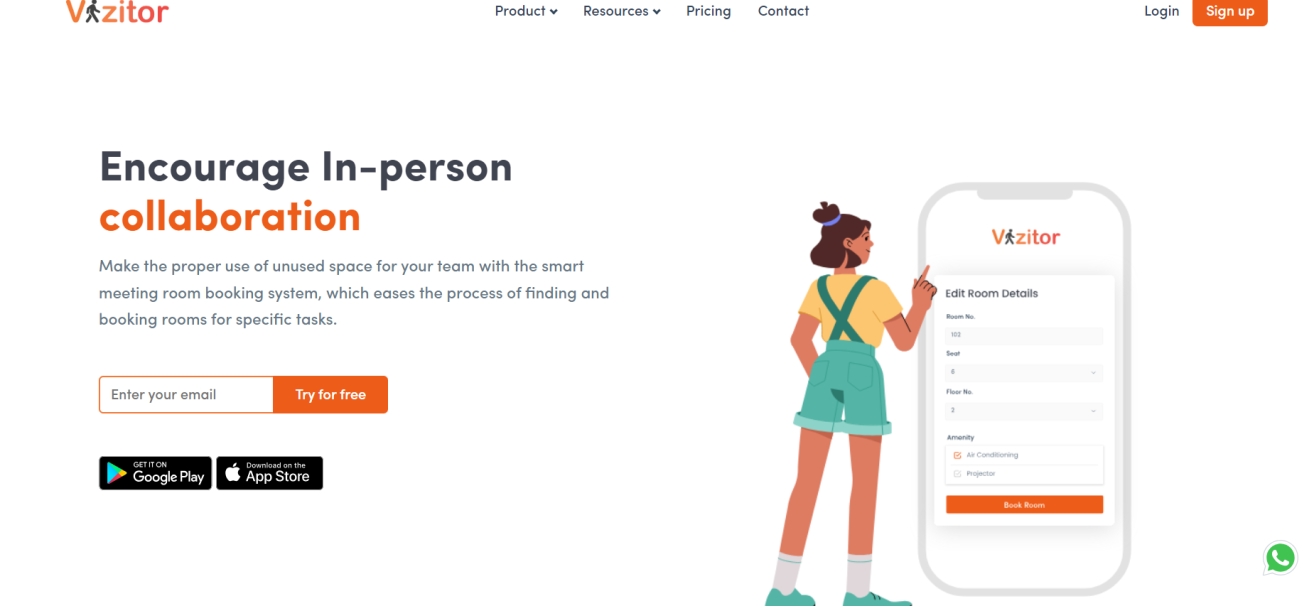
• Efficient Scheduling: Employees can easily book rooms online, preventing double-booking and ensuring smooth meeting execution.
• Utilization Tracking: Data is collected on meeting room usage, helping you identify underutilized spaces and optimize resource allocation.
• Real-time Availability: Employees can quickly check real-time room availability, saving time and frustration.
Vizitor’s Meeting Room Booking System offers a user-friendly platform for scheduling meetings, managing resources, and ensuring optimal utilization of meeting spaces.
By implementing these technological solutions, you can transform customer flow management in your business. Imagine a world where customers wait comfortably, appointments run smoothly, visitors feel welcome and secure, and meeting rooms are used efficiently. This is the power of technology in streamlining customer flow.
5 Top Tips for Streamlining Customer Flow Management
Customer flow management is a strategic approach businesses use to optimize the customer journey within their establishment. It involves analyzing customer behavior, implementing improvements, and measuring results to enhance customer satisfaction and overall business performance. Here are 5 key tips to get you started:
1. Understand Your Customer Flow:
• Actionable Steps: Utilize data from point-of-sale systems, footfall counters, and customer feedback to gain insights into customer flow patterns.
• Benefits: Identify peak hours and bottlenecks to allocate staff resources effectively and prevent congestion.
• Statistical Insight: According to McKinsey, businesses with a deep understanding of customer journeys experience a 20-30% increase in customer satisfaction and a 10-20% increase in revenue.
2. Optimize Store Layout and Signage:
• Actionable Steps: Regularly review and adjust your store layout based on customer flow data and feedback. Prioritize high-traffic areas for popular products and utilize color-coded or interactive signage to guide customers easily.
• Benefits: A well-designed layout and clear signage minimize confusion and encourage exploration, leading to a more enjoyable shopping experience.
• Statistical Insight: Retail Next reports that an optimized store layout and signage can lead to a 15% increase in overall sales.
3. Embrace Technology Solutions:
• Actionable Steps: Research and invest in suitable technology solutions like digital queue management systems, handheld staff devices for order taking, or mobile ordering apps. Train staff for effective use and ensure smooth integration.
• Benefits: Technology streamlines processes, reduces wait times, and improves operational efficiency.
• Statistical Insight: Deloitte reports that businesses with mobile queue management systems experience up to a 20% reduction in customer wait times.
4.Empower Your Staff:
• Actionable Steps: Conduct regular training sessions to improve staff skills in customer service and conflict resolution. Encourage open communication and recognize exceptional customer service to maintain high standards.
• Benefits: Well-trained and empowered staff can handle peak hours efficiently, resolve issues promptly, and contribute to a positive customer experience.
• Statistical Insight: A Gallup study found that businesses with highly engaged employees outperform their competitors by 147% in earnings per share.
5. Offer Self-Service Options:
• Actionable Steps: Assess your business model and identify areas where self-service kiosks or mobile ordering options can be incorporated without compromising the customer experience. Promote these options through various marketing channels and provide support for unfamiliar customers.
• Benefits: Self-service empowers customers, reduces wait times, and frees up staff for other tasks.
• Statistical Insight: A survey by SOTI Inc. showed that 73% of consumers prefer using self-service technologies for quick and easy transactions.
By implementing these tips and leveraging technology, you can significantly enhance customer flow management, leading to happier customers, increased sales, and improved operational efficiency.
FAQ:
What is customer flow management?
Customer flow management refers to the strategies and tools used to manage the movement and experience of customers within a business setting, such as retail stores, banks, or hospitals. This includes everything from entering the facility to navigating through services and completing transactions.
How can queue management systems improve customer satisfaction?
Queue management systems reduce wait times and prevent line congestion by organizing how customers are served. By using virtual queuing and real-time updates, these systems can improve overall customer satisfaction by making wait times feel shorter and more manageable.
What are the benefits of using visitor management systems?
Visitor management systems enhance security and operational efficiency by tracking who enters and exits a facility. These systems streamline the check-in process, improve data accuracy, and can integrate with other security measures to ensure a safe environment for both customers and staff.
Can technology help in managing meeting room bookings?
Yes, meeting room management systems can optimize the use of conference spaces and resources. These technologies allow users to book rooms, manage schedules, and adjust bookings in real-time, which helps in reducing conflicts and maximizing space utilization.
What role does real-time data analytics play in customer flow management?
Real-time data analytics provides insights into customer behavior, peak traffic times, and flow patterns. This information helps businesses make informed decisions to improve customer experiences, allocate staff effectively, and streamline operations.
How do self-service technologies reduce operational costs?
Self-service technologies, such as kiosks and mobile apps, allow customers to perform tasks like ordering, paying, or checking in without staff assistance. This can significantly reduce labor costs, speed up service delivery, and allow staff to focus on more complex customer needs.
What incentives can be offered during off-peak hours to manage customer flow?
Businesses can offer special promotions, discounts, or loyalty points during off-peak hours to encourage visits during these times. This helps in managing the customer load more evenly throughout the day and improves the use of business resources.
How do ticket dispensing machines enhance customer flow management?
Ticket dispensing machines provide customers with a physical or digital token that marks their place in a queue. This system organizes service delivery and reduces crowding, making the waiting experience more comfortable and structured.
What are the key performance indicators (KPIs) for effective customer flow management?
Key performance indicators for customer flow management might include customer wait time, average transaction time, customer satisfaction scores, and overall throughput. Tracking these KPIs helps businesses evaluate their performance and identify areas for improvement.






